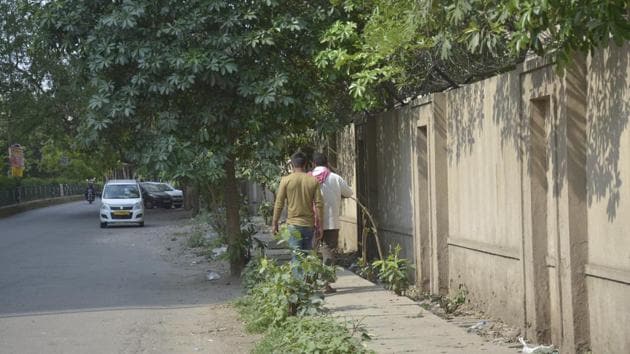Gurugram can learn from Karol Bagh’s pedestrianisation project
Our agencies have still not understood the impact of a good pedestrianisation project. Therefore, pedestrianisation of Ajmal Khan Road can bring these three key learnings to Gurugram and rest of the country.
Last week, visitors at Ajmal Khan Road in the famous Karol Bagh market were taken by surprise. Instead of blaring horns or aggressive motor vehicles, pedestrians had the full road to themselves. Why? Because half of this one-kilometre road was made vehicle free, and dedicated to pedestrians and non-motorised vehicles. So, off went the clogged streets and parked vehicles, and in came the shiny beaches, potted plants and smiling faces.

Progressive cities in other countries have revitalised their core markets for people. These are the go-to places for residents as well as visitors. Therefore, the initiative in Delhi is a great step forward. However, back home our core city markets are usually avoided by residents and visitors unless it’s very important.
Gurugram has a very vibrant Sadar Bazaar, but ask anyone about going there? I bet, the response would be an emphatic no. That’s because people don’t want to get stuck in Sadar Bazaar. The conversation around pedestrianisation of this place does happen once in a while, but nothing moves forward. One of the main reasons for this while progressive cities have given importance to people, our cities, including Gurugram, still give importance to motor vehicles.
This is because our agencies have still not understood the impact of a good pedestrianisation project. Therefore, pedestrianisation of Ajmal Khan Road can bring these three key learnings to Gurugram and rest of the country.
Pedestrianisation also has economic benefits
One of the main reasons why pedestrianisation has not taken off in our cities is the resistance to change. This mostly comes from shop owners as they fear restricting motor vehicles will impact their sales. However, a good pedestrianisation project does just the opposite. It brings in more people, which in turn translates into higher sales. For example, the closure of Times Square in New York for cars resulted pedestrian volume going up by 6% in the first year alone. This resulted in greater sales and the project now has garnered full support from traders. It’s not only that this happens in western country only. A study by WRI India on temporary closure of streets in Connaught Place on Sundays for organising Raahgiri shows similar results. As many as 71% establishments in CP reported increase in sales and 83% reported increased footfall on Sundays. Similar statistics were also reported in other cities.
Priority to people means priority to all
The major mode of transport in our cities is walking. For example, a 2014 report by Institute of Urban Transport for decongesting Delhi found that out of the 2.6 million trips are performed in Delhi on a daily basis, and out of which 41% are walking and cycling trips.
Similarly, the study by Gurugram Metropolitan Development Authority (GMDA) reveals that within municipal corporation area, walking is the largest mode of transport and around 27% people walking for work every day. Yet, our streets lack even the basic facilities for pedestrians – footpath.
Pedestrianisation projects bring back the focus on moving people and not vehicles. For example, in November 1962, Copenhagen’s main street, Strøget, was pedestrianised and this initiated an urban transformation phenomenon. Today, 80% of all journeys in Copenhagen are made on foot, and 14% by bicycle. Car traffic in the city centre has been reduced significantly and congestion is no longer a problem.
Reducing emission improves the quality of life
Vehicular emission is one of the major sources of air pollution. It is estimated that third of the PM2.5 emission in the Delhi air shed area comes from vehicular exhaust. Therefore, reducing vehicular emission also improves air quality. However, this is only a part of the story, the bigger impact is that reduction in tail pipe emission greatly impact the exposure to pollutants, thus improve public health.
In fact, in the 1970s the first study directly linking pedestrianisation with air quality was done for the pedestrianization of Nuremberg and it showed the positive impact. In Burgos, Spain, the city’s historic centre was pedestrianised between 2006 and 2008 to reduce air pollution and protect city monuments, resulting in 30% increase in the number of pedestrians and a remarkable 200% increase in the number of cyclists. Also, in Bogota, Colombia, creation of hundreds of kilometres of pedestrian-only streets and plazas also had similar impact. The city now has the world’s longest pedestrian street with 17km-long Alameda el Porvenir, which connects the city’s low-income southwest district with public schools, libraries, and BRT stations.
Therefore, if the pedestrianisation project of Karol Bagh is sustained and scaled up, it can become a case example for our cities, and especially Gurugram. It can show them and their leadership that the solution to traffic congestion does not always mean more cement, more bitumen or more steel. It can also mean fewer cars. As Nobel laureate William Gloding once said, ‘the greatest ideas are the simplest’.
@amitbhatt4u
(Amit Bhatt is the director- integrated transport, WRI India)
Stay updated with all the Breaking News and Latest News from Mumbai. Click here for comprehensive coverage of top Cities including Bengaluru, Delhi, Hyderabad, and more across India along with Stay informed on the latest happenings in World News.
Stay updated with all the Breaking News and Latest News from Mumbai. Click here for comprehensive coverage of top Cities including Bengaluru, Delhi, Hyderabad, and more across India along with Stay informed on the latest happenings in World News.






